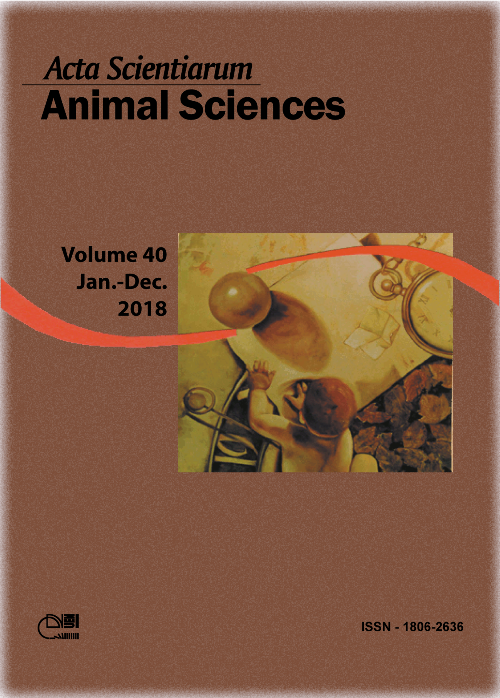<b>Fermentation characteristics and nutritive values of sorghum silages
Abstract
The objective of this study was to select sorghum genotypes for silage production. The study was carried out at Embrapa Maize & Sorghum’s experimental field. Planting was performed in randomized blocks, with three replicates and the Scott-Knott test at a 5% probability level. The material was ensilaged in laboratory silos opened after 56 days for analysis concerning fermentation and bromatological composition. Only crude protein showed no significant difference (p > 0.05), with an overall mean of 8.88%. The other variables presented significant differences (p < 0.05): pH (3.34 to 3.94); Aw (0.93 to 0.98); N-NH 3/TN (1.61 to 6.56%); green matter yield (12.05 to 34.14 t ha-1); dry matter yield (6.19 to 11.42 t ha-1); dry matter (26.89 to 49.95%); ashes (4.08 to 6.88%); neutral detergent fiber corrected for ash and protein (47.67 to 65.79%); acid detergent fiber (16.62 to 35.89%); hemicellulose:cellulose (1.07 to 2.71%); lignin (2.03 to 6.52%), digestible dry matter yield (3.70 to 7.41 t ha-1) and dry matter digestibility (56.36 to 72.67%). Based on digestible dry matter yield, the genotypes: male 201191 and hybrids 2012F47484, 2012F47515 and 2012F47525 stood out in relation to the others for showing good yielding, adequate nutritional value, with low dry matter and NDF levels coupled with high digestibility values and good fermentation patterns of the silages.
Downloads
DECLARATION OF ORIGINALITY AND COPYRIGHTS
- I Declare that current article is original and has not been submitted for publication, in part or in whole, to any other national or international journal.
The copyrights belong exclusively to the authors. Published content is licensed under Creative Commons Attribution 4.0 (CC BY 4.0) guidelines, which allows sharing (copy and distribution of the material in any medium or format) and adaptation (remix, transform, and build upon the material) for any purpose, even commercially, under the terms of attribution.
Read this link for further information on how to use CC BY 4.0 properly.








































